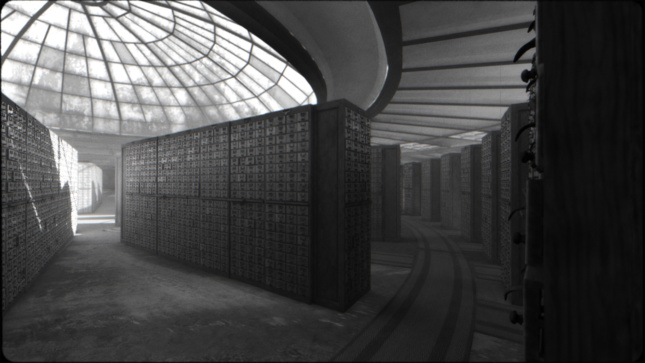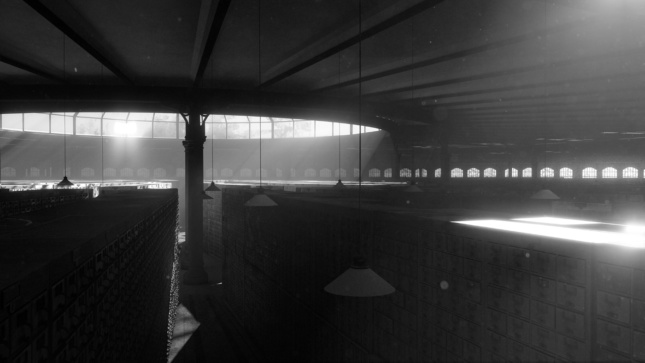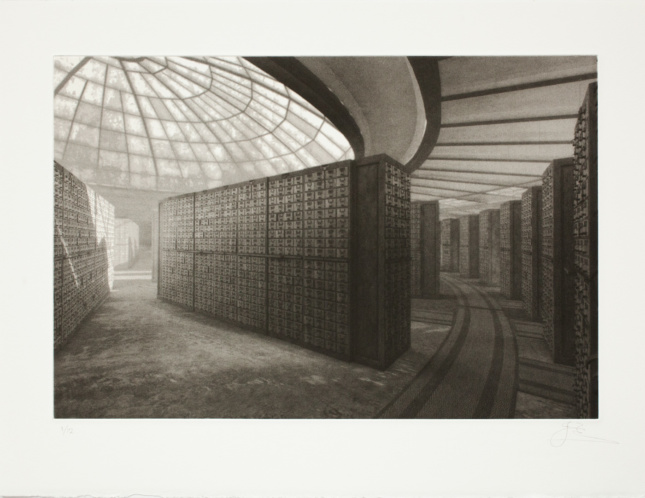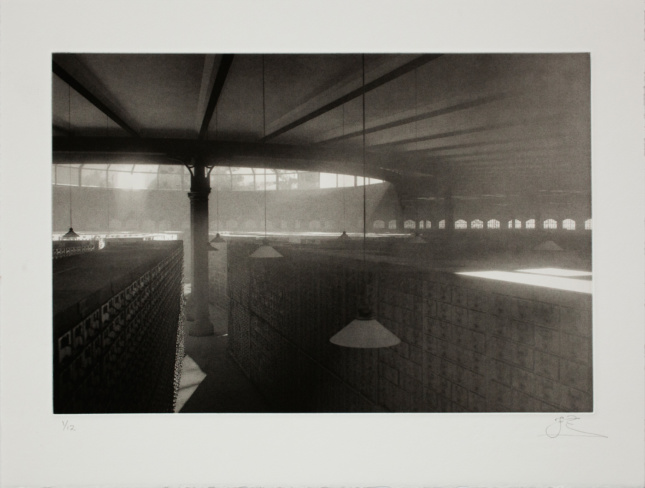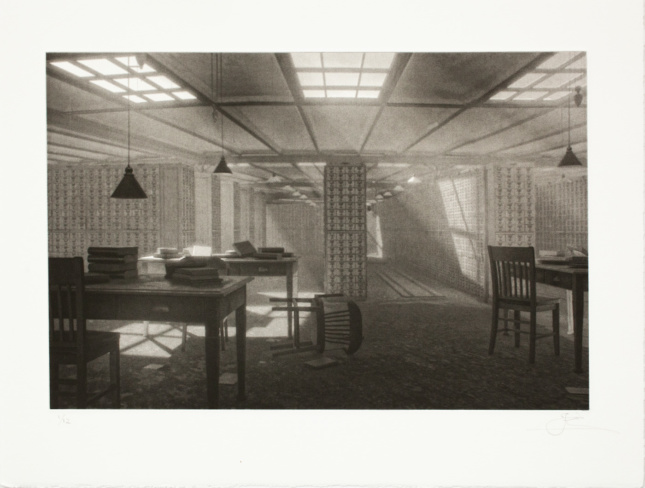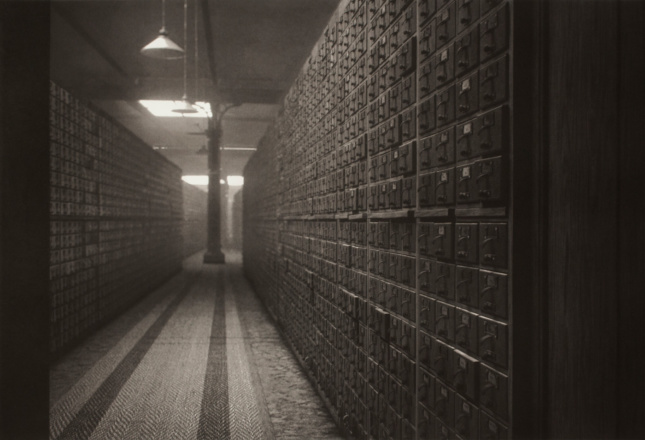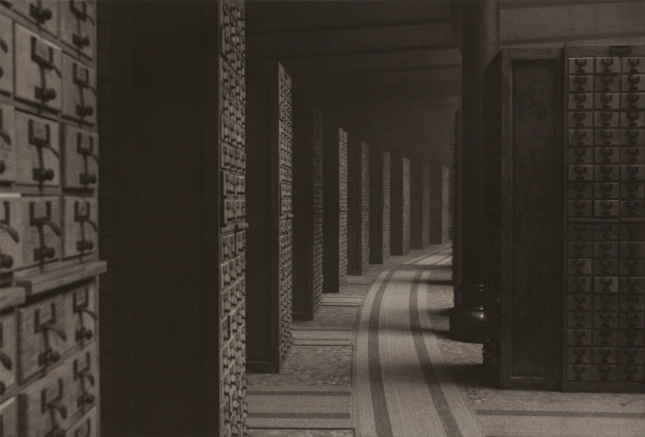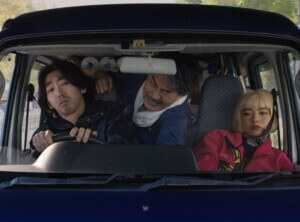When watching the Amsterdam-based Fiona Tan’s animated video installation Archive (2019) at Peter Freeman‘s Manhattan gallery in SoHo, one feels as though they have been transported into a visual, Foucaultian metaphor for the passage of time. Rendered in silent 3D, the camera glides across derelict stacks of virtual card catalog cabinets, with artificial shudders, dust, and scratches expertly woven into the 5-minute tour of an imaginary, panoptic archive in black-and-white. The video is just one piece of a concise selection of works on view in Archive / Ruins, Tan’s first solo show in the city since 2010. Based on the Belgian pioneer of information science Paul Otlet’s conception of an archive that contained all human knowledge—an idea with uncanny similarities to the present-day internet—Archive gives cinematic treatment to Otlet’s vision, presenting a medium-conscious vision of history. Like the larger exhibition, Archive might feel slightly anemic at first glance, but what the installation lacks in formal contrast is more than outweighed by the conceptual and technical richness of the work on display.
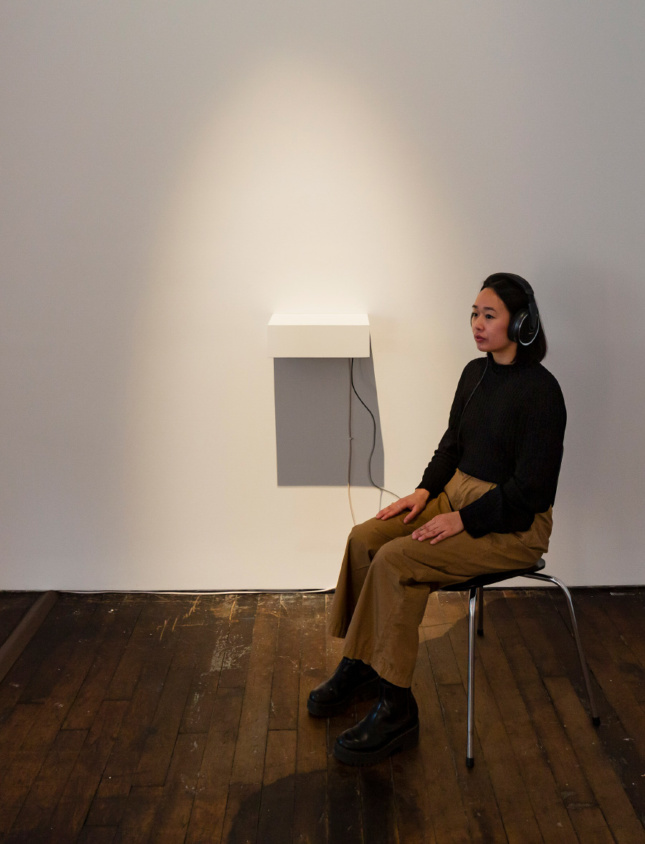
In an accompanying booklet, A Walk Among Ruins, Tan explains in her usual clear, concise language the primary concepts and processes on display. A detailed recalling of the highly physical process of editing celluloid film is bookended by texts on the Renaissance engagement with classical architecture in Rome, and a short but poignant entry describing poet Ludovico Ariosto’s sixteenth-century epic poem about a voyage to the moon, which he imagined as a receptacle for all the structures lost to the ravages of time:
Ruins of cities and of fortresses
Lay scattered all about, with precious stores,
Plots ill-contrived, broken alliances,
Feuds and vendettas and abortive wars…
The booklet exemplifies the multilayered experiences made possible by Tan’s presentation. Whether one reads the entire text or none of it, the images on display resonate with each other and our own experience with historical and personal ruins. As one’s eye moves about the real and imagined vestiges of Tan’s historical facts and fictions, we are reminded that our knowledge of history is shaped by the texts and ruins it leaves for us, and our grasp of the past is based on the fickle lens of memory.
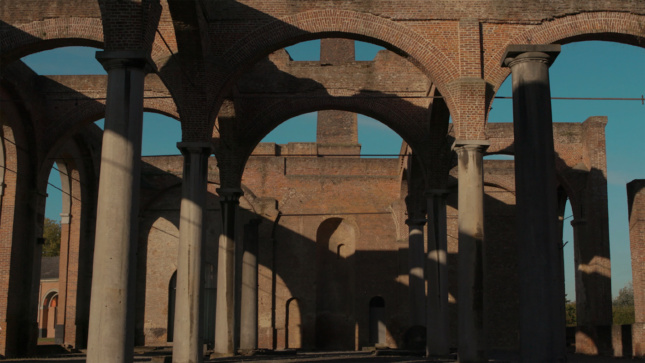
Analog film enthusiasts will enjoy Ruins (2020), a room-sized dual projection of one high definition video and one 16 mm film, both of which project a similar, but not identical, 4-minute film on a continuous loop. Each feed is a silent amalgamation of static shots that variously frame the dilapidated arches, freestanding columns, and crumbling surfaces of the Grand-Hornu, an abandoned mining complex in Belgium—a company town (cité ouvrière)—built between 1810 and 1830. Projected onto opposite walls, the films demonstrate their inherent fragility; the HD digital video provides a cool, crisp contrast to the soft yellow images of the celluloid, subtly evoking the longevity of each medium. Where analog film can last for at least (as far as we know) 100 years, the digital film will, without being transferred to a newer memory chip, decay into an unplayable video file after less than a decade. However, Ruins simultaneously highlights an important caveat to this comparison: The 16 mm film runs through the projector on a continuous loop, the act of playing the print decaying it to the point of being unusable after a matter of days, when a new print must then be made from the master copy.
The holistic conception of the exhibition, and the many avenues through which one may enter and exit the concepts in play, is characteristic for Tan, yet the austerity of her images here provides subtle emphasis on the theme of shadow and light. A set of photogravures—a type of mechanical print traditionally made from a photographic negative—are the first thing visitors observe upon entering the gallery, their high contrast, black-and-white images display screenshots from Archive’s virtual stacks. If, as Walter Benjamin (one of the many historical luminaries with whom Tan is in direct conversation) suggests, history decays into images, then Tan’s cinematic musings on the material future of architectures lays bare, with her usual deftness, the delicacy of both structure and image in the face of our eternal, ever-evolving, unavoidably-mediated future.
Archive / Ruins runs through February 15.






